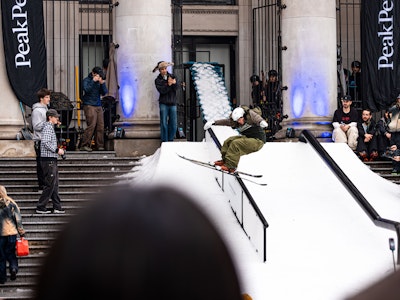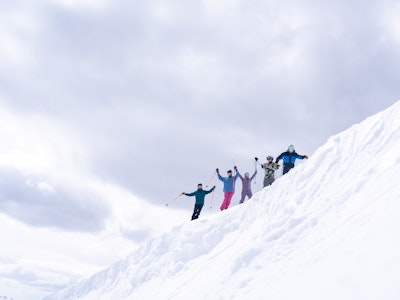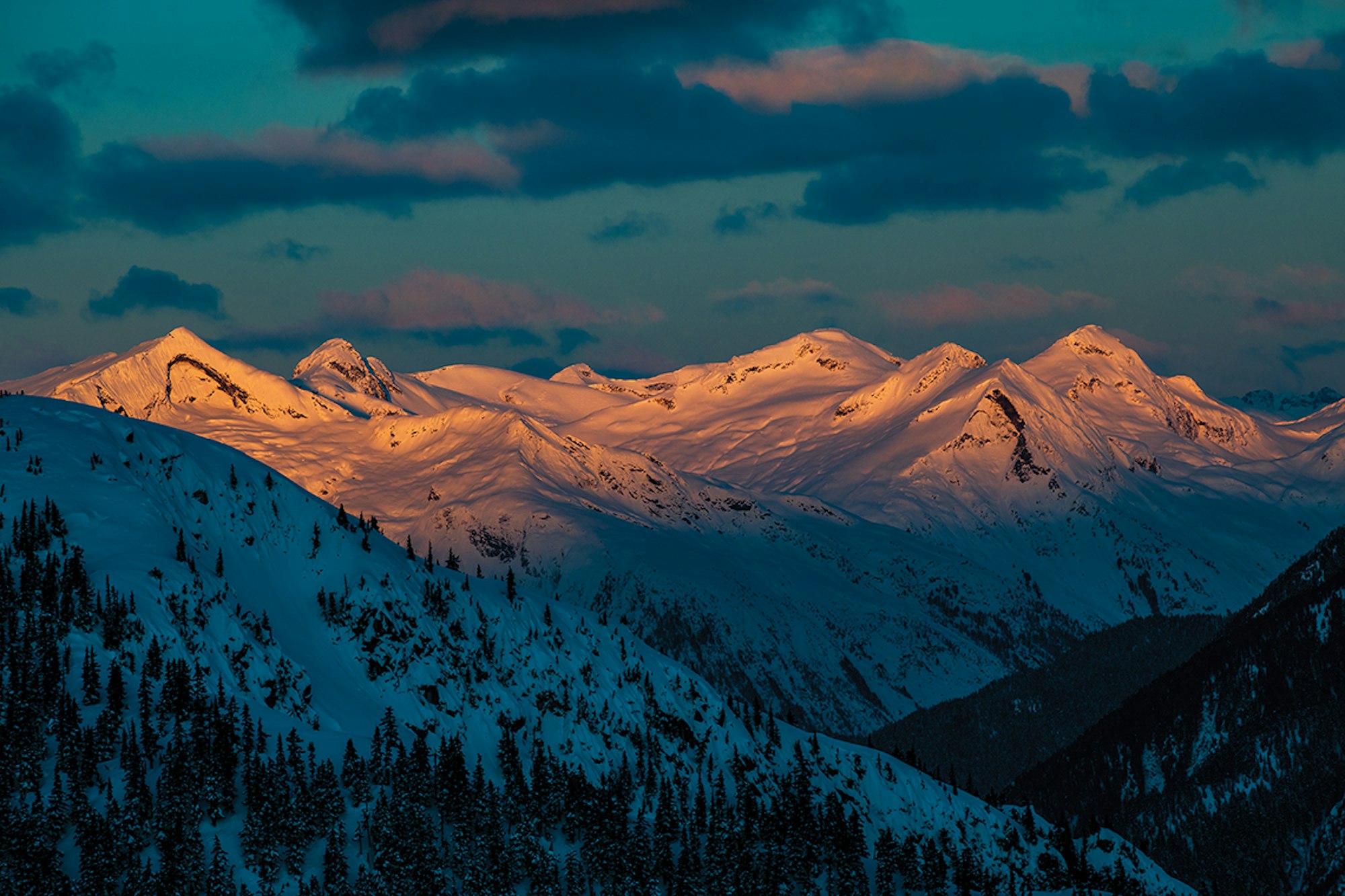Shames Mountain, Canada’s first non-profit, community co-op ski area might provide the country’s best backcountry access. The small hill, located in Terrace, British Columbia, has zero lift lines and untracked powder sticks around weeks after storms. Find out why renowned photographer and longtime FREESKIER contributor, Mattias Fredriksson, now calls the town in northwest British Columbia home.
WORDS & PHOTOS • Mattias Fredriksson
After the driest February in recent memory, it finally starts to snow again. It’s been three weeks since the last substantial snowfall, and for northwest British Columbia, that’s an eternity. Lately, even some of the most passionate locals have been sitting out days, which is also rare. Every conversation about skiing becomes a rant about the strange, dry winter and how few powder days we have had so far. So, when the big flakes are falling from the sky again, it reveals a lot about the people of this place.
The forecast is looking good; 15 centimeters today, potentially 30 to 40 more in a few days and then back to high pressure. Things are about to get back to normal. Well, as normal as things get up here in the wild, northwest part of the province.
When the upper parking lot at Shames Mountain is full mid-week, you know it’s a powder day. There’s palpable excitement and pretty much everybody I know seems to be here on this particular Monday. Residents of British Columbia are spoiled when it comes to powder skiing and as a Swede with two winters of B.C. living under my belt, I’ve seen it firsthand. I have experienced quite a few more powder days compared to when I lived in Sweden.
That begs the question: How the heck did a Swede end up here, in northern B.C.?
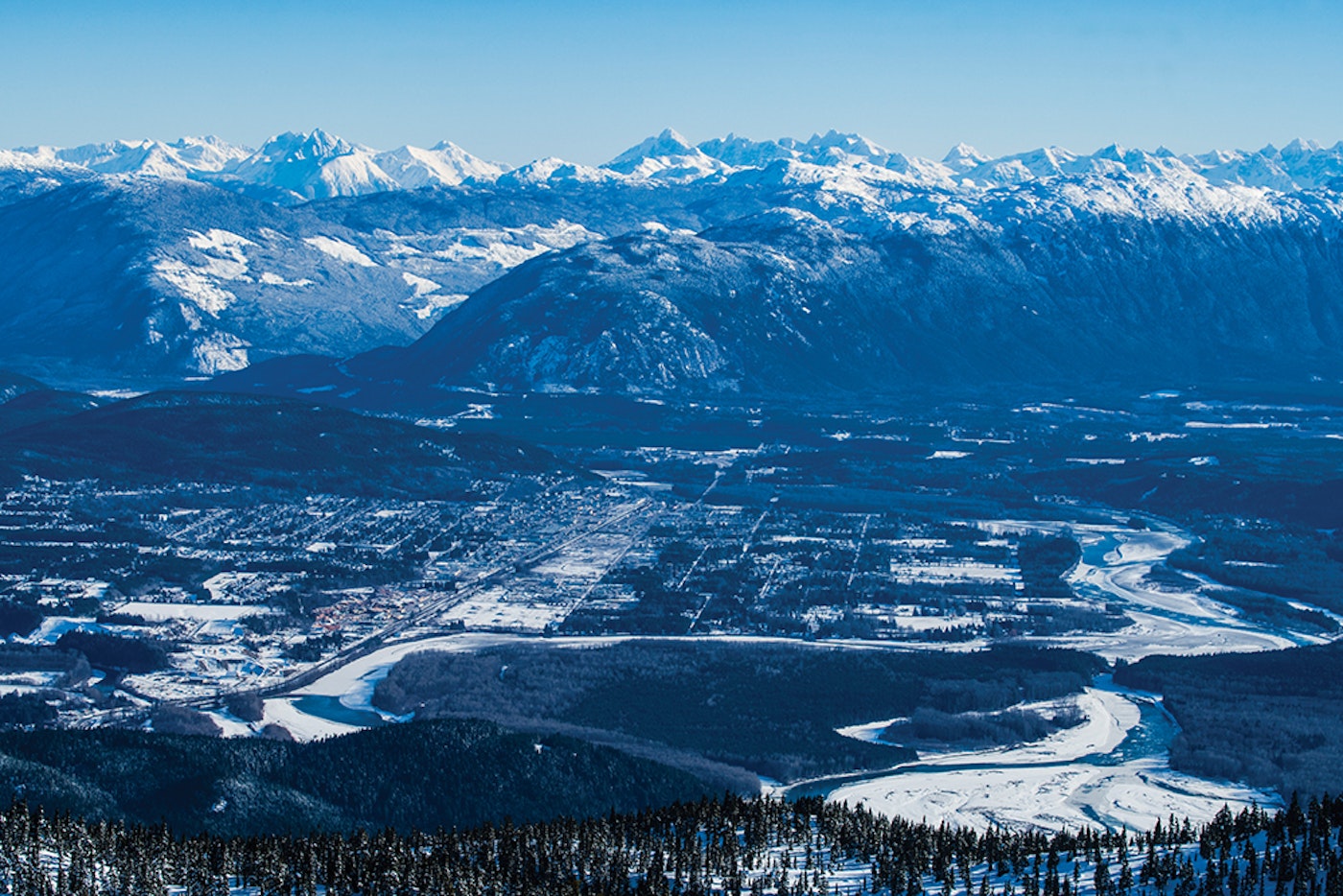
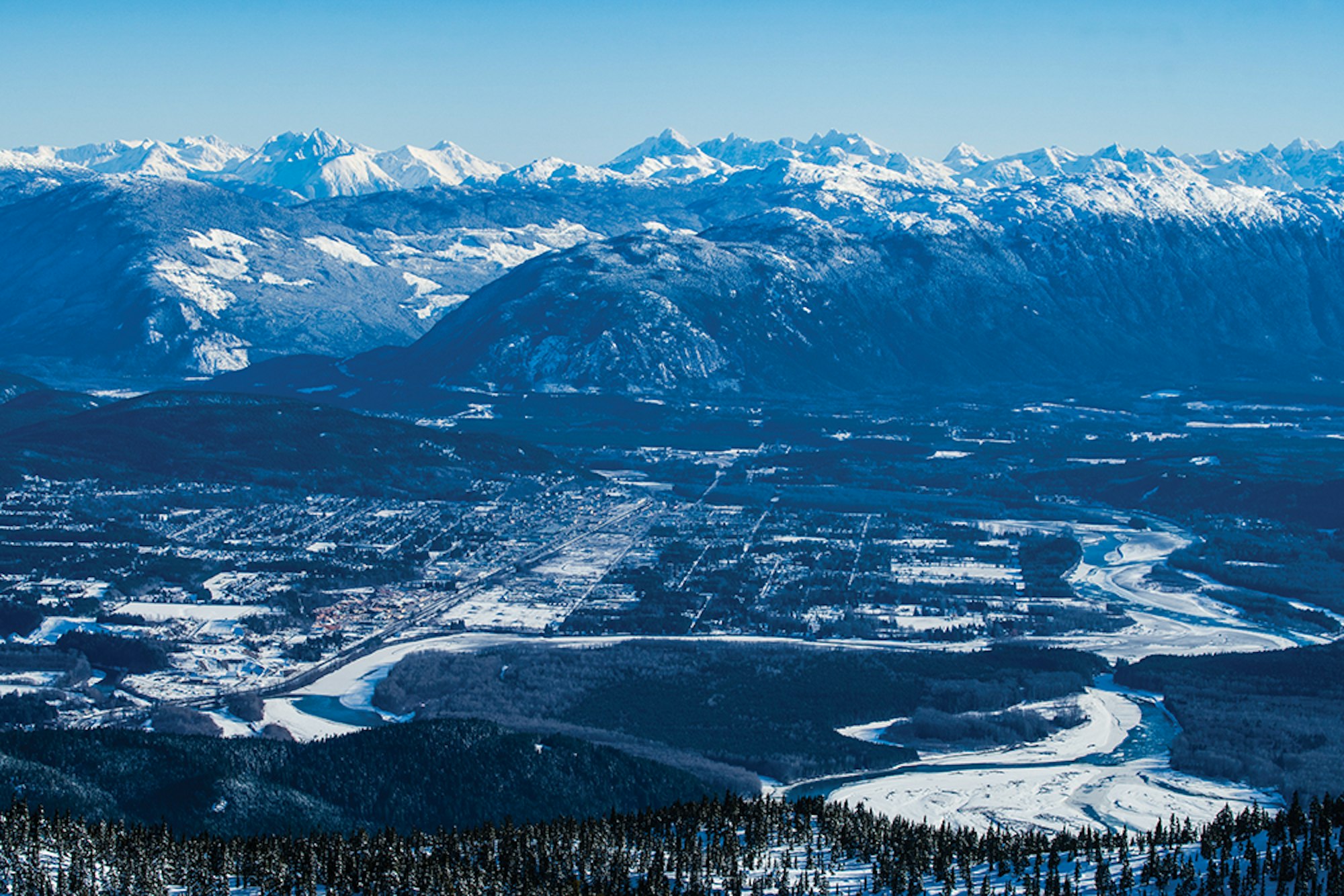
View of the town of Terrace and the Skeena River from No Name Ridge.
For 20 years, Åre, Sweden, was my home, and it became my primary studio, but sometimes change is healthy. So, in 2017, my partner Elle and I decided to move to British Columbia.
I’ve loved Canadian ski culture ever since I first visited in February 1999. It helped that my first experience there was during an exceptionally deep winter. British Columbia exceeded the novelty and stole my heart. When I boarded the plane back to Sweden, I already knew I had to return soon.
Over time, British Columbia became my second home. I made annual trips there in the winter and came over to mountain bike in the summers, too. Ski and bike buddies became close friends. I told myself, “One day I would love to live in Canada,” but at the time that was just a dream.
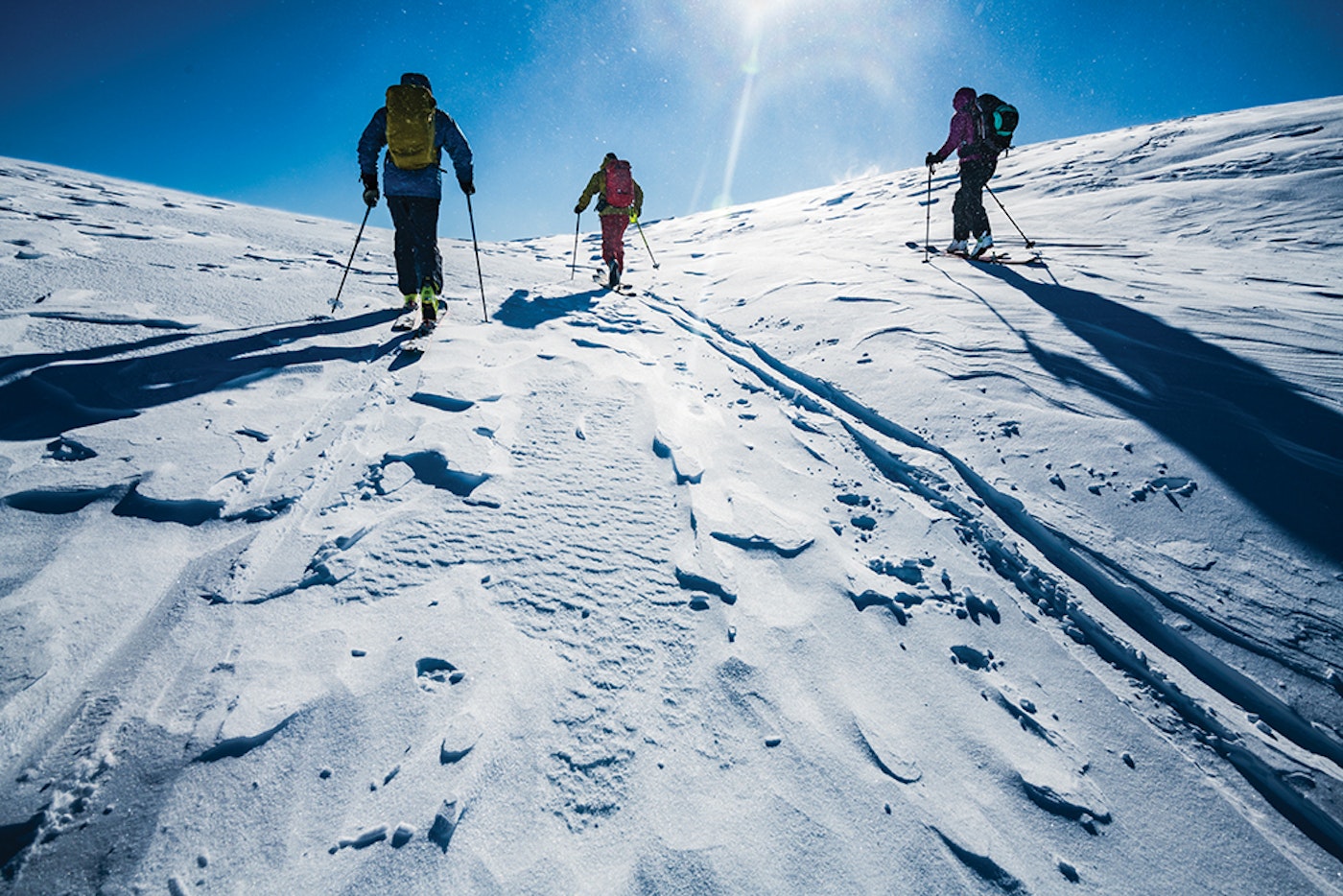
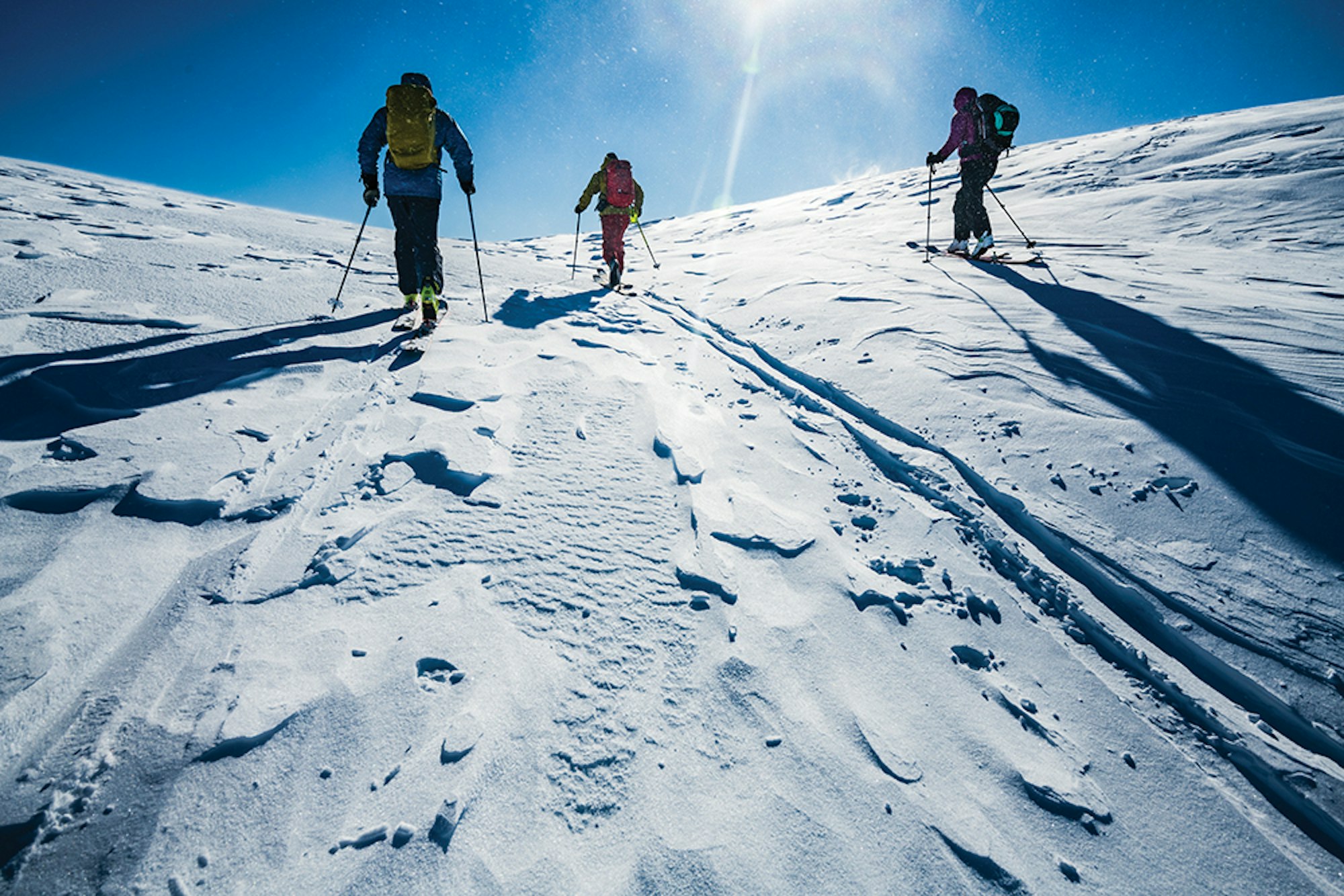
Chad Sayers, Brad Zeerip and Sarah Panofsky ski touring in the Shames backcountry.
In 2011, I met a smart young woman from Nelson, British Columbia—in Sweden, of all places. Elle was attending Stockholm University for her Master’s degree in European Law. After dating for a period of time, Elle eventually moved up to Åre and we lived there together for five years.
Over the years, we had talked about moving to Canada. Elle wanted to pursue her law career in British Columbia and I had never lost my desire to live there. In 2017, we finally decided to go for it. We settled in Squamish, between Vancouver and Whistler, with our Siberian Husky, Tikaani. Whistler Blackcomb was our home mountain and, while the skiing was great, the driving to and from—especially on the busy weekends—made us realize we needed to find a smaller town. We checked out a few other places in B.C., but between high living costs, few job opportunities, remote locations or inadequate infrastructure for traveling, we came up empty. Then, Elle was offered an exciting job in Terrace.
Terrace, located near the Alaskan border, is a relatively small, quiet industrial town of 20,000 people by the Skeena River, one of the longest undammed rivers in the world. Terrace has long depended on its national resources, especially the forests. In the ‘80s, the town’s three sawmills employed half its residents. When the forestry industry went bust, two of the mills closed down. Over time—aided by its strategic location along the railroad and Highway 16–the community has transformed into a service and professional hub of northwestern B.C.
Terrace and the northwest region are seeing an influx of young professionals in different fields. Many people come for a job opportunity but stay for the lifestyle. With affordable housing, great access to the outdoors and barely any traffic, this is an excellent place for people to relocate, especially in times when towns like Whistler, Nelson and even Revelstoke have become expensive and busy.
I had visited Terrace several times and had a great feeling about the place. And its newly rebuilt airport, with multiple flights per day to Vancouver, made it easy to travel. Elle and I decided to go for it. The deal-maker was all of the positive things we read and heard about Terrace’s local ski hill, Shames Mountain.
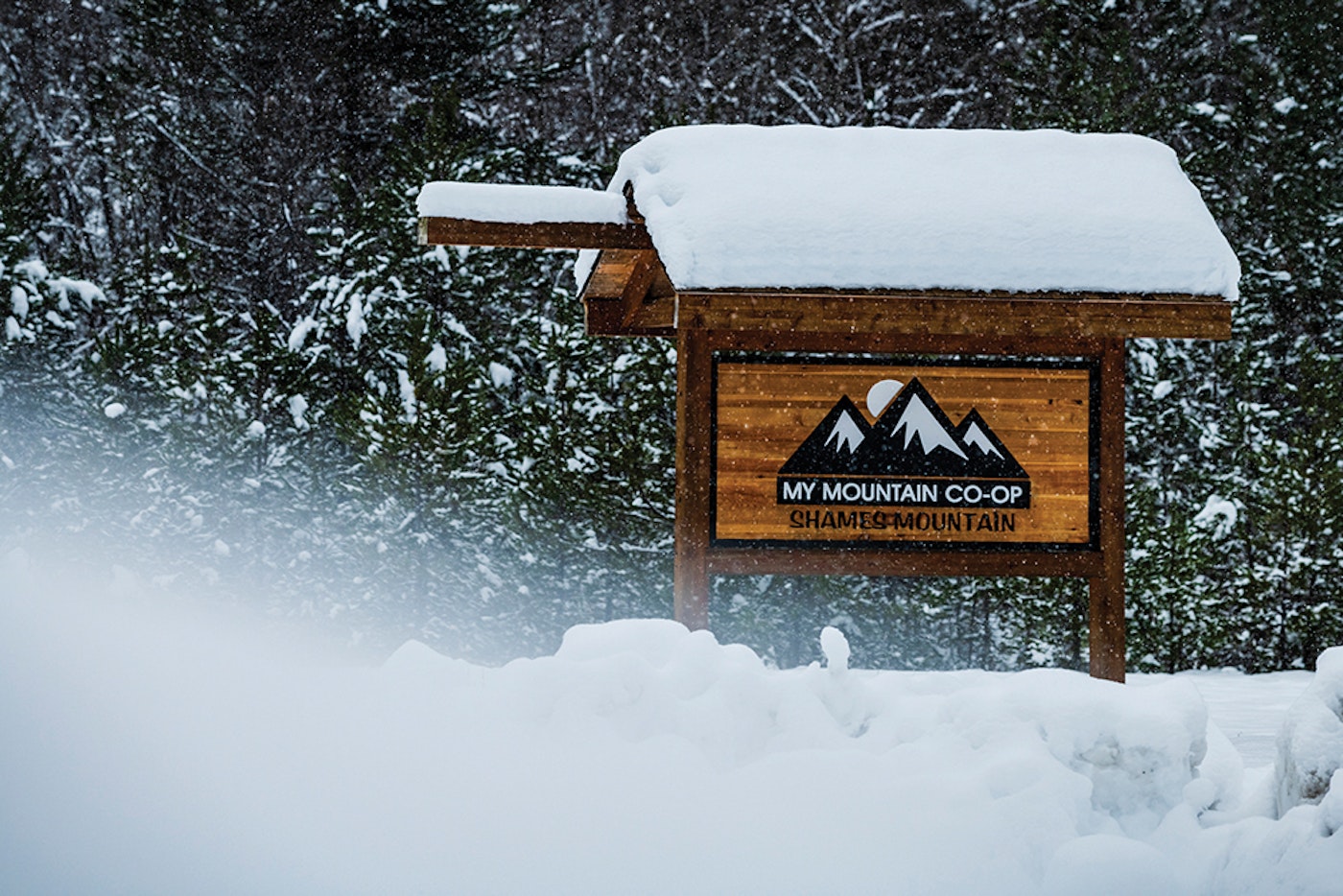
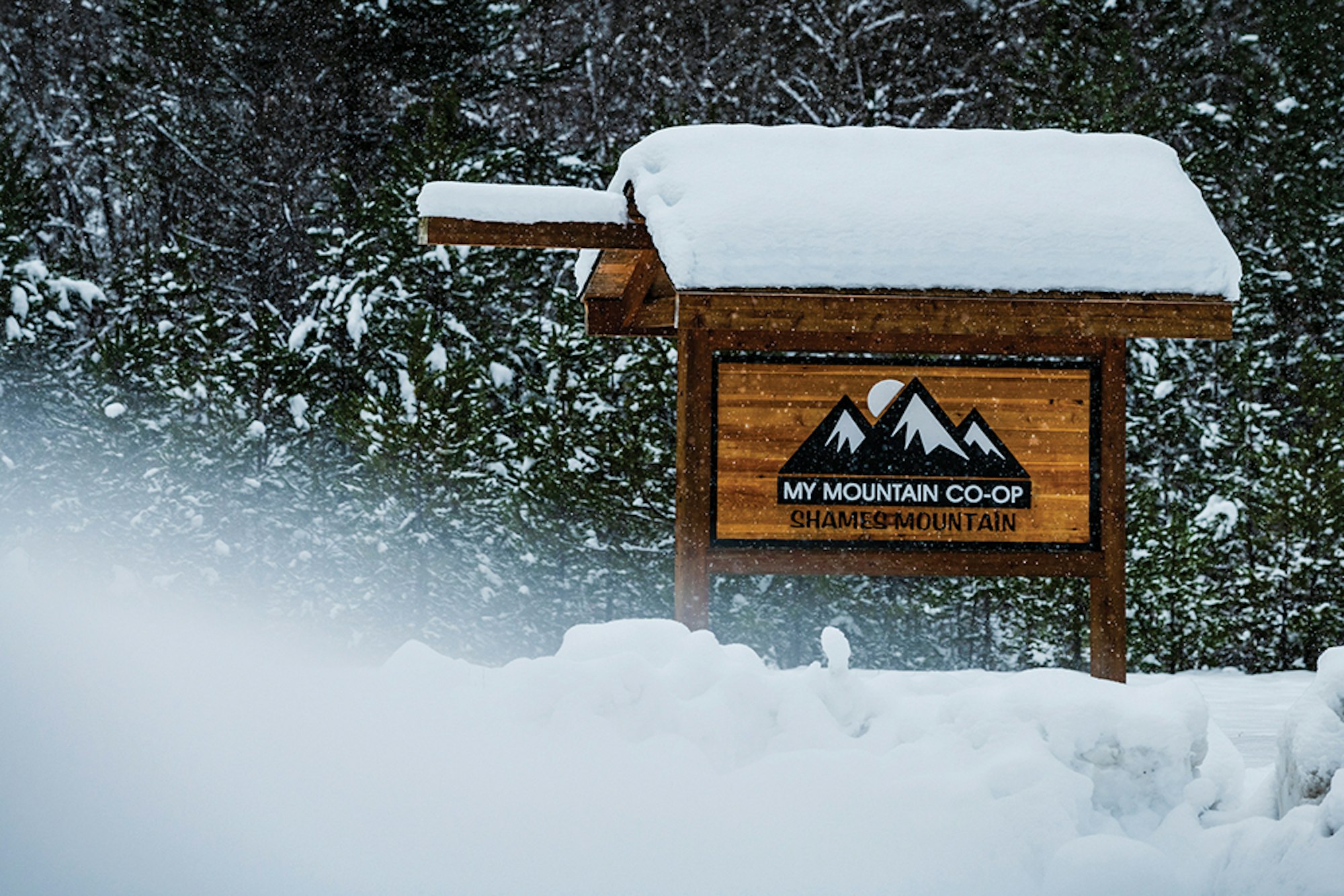
Shames is an outlier, a big mountain in a small town with an annual snowfall of 12 to 15 meters, world-class backcountry access and a quaint but passionate community of skiers.
It’s a difficult and challenging task running a ski hill in a small, remote town where most people work Monday through Friday; as a result, Shames was put up for sale in 2008. The local ski community responded, creating a non-profit society called Friends of Shames to keep the little ski hill open. Ultimately, Friends of Shames formed a community service co-op to sustain the mountain. Individuals, businesses and corporations bought memberships and worked to raise awareness about the benefits of a co-op ski area. My Mountain Co-op was officially created in 2011 to provide recreational opportunities on Shames Mountain, with Shames operating as a co-op that same year. As of January 2013, My Mountain Co-Op achieved the milestone of officially owning Shames Mountain Ski Area, which was a first-ever for Canada—a non-profit ski co-operative. Today, the co-op has over 1,600 members, and I am proud to say Elle and I are two of them.
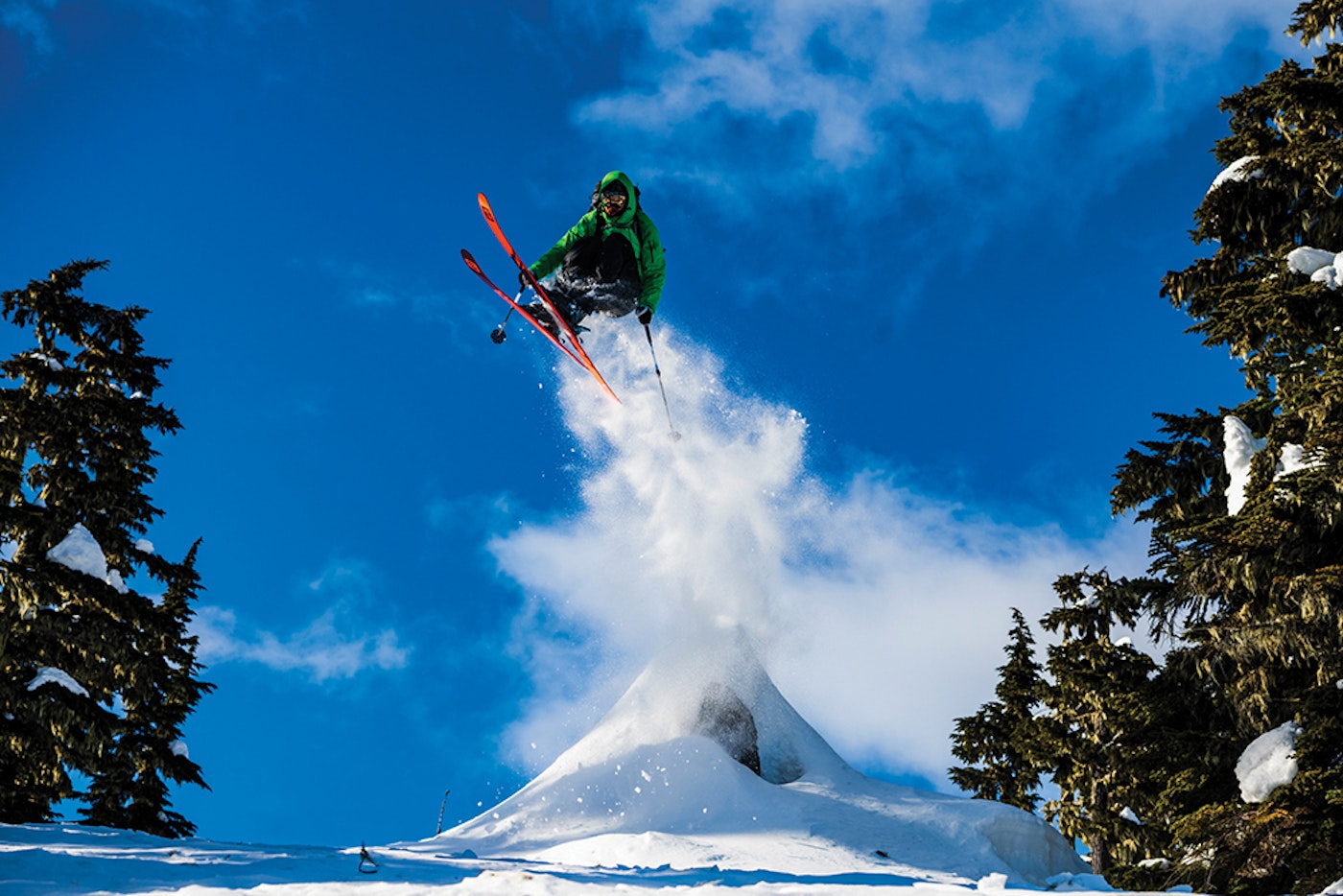
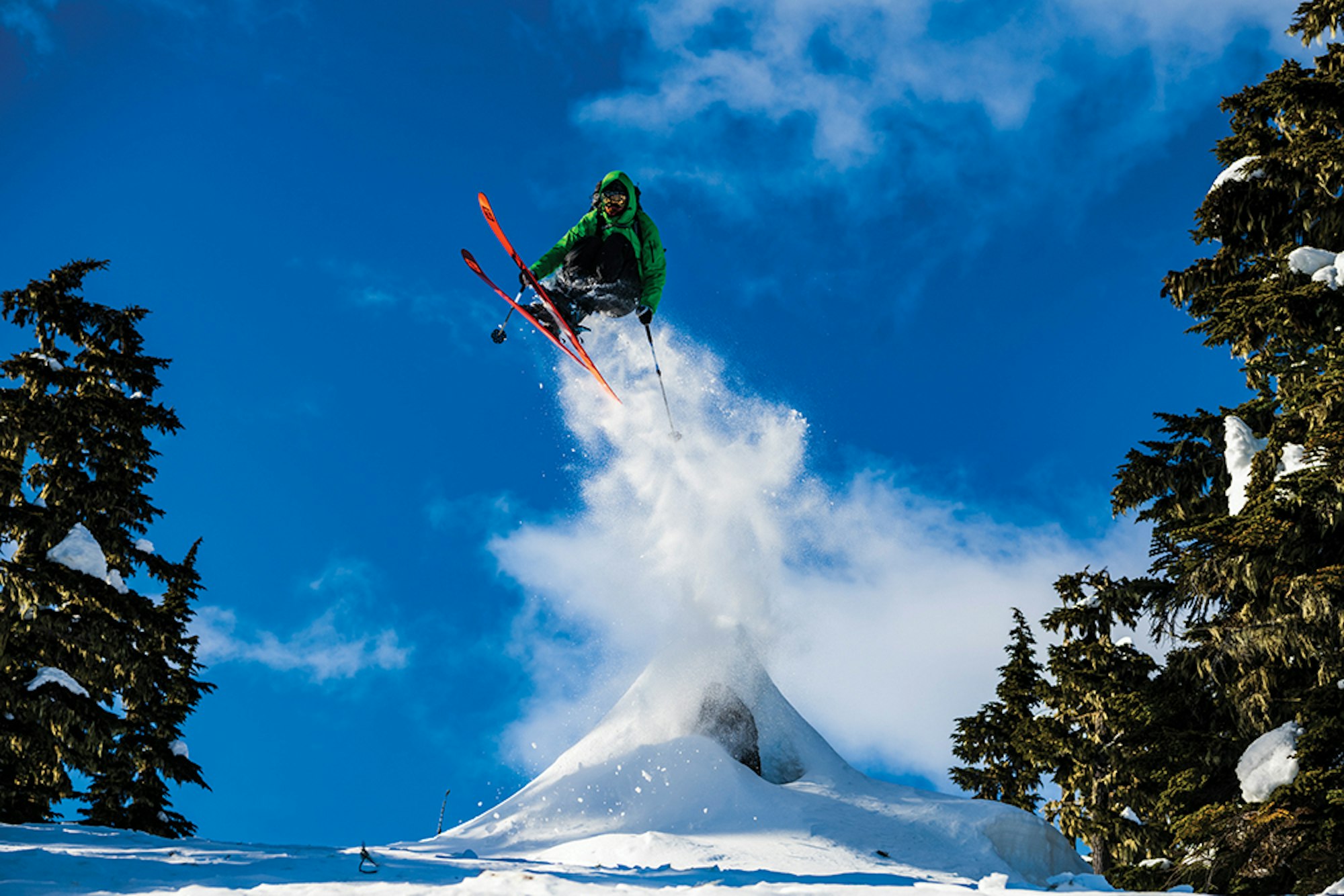
David Kantermo catching some air time at Shames Mountain.
Shames Mountain serves as a steep ladder into some of British Columbia’s most underrated backcountry skiing. The actual ski hill has only one chairlift, one T-bar and a rope tow for beginners. Still, it offers almost 500 vertical meters of steep and challenging inbounds terrain with excellent tree skiing. But, let’s be realistic; you don’t go to Terrace for the ski hill runs. What makes Shames such a unique ski area is the genuine, grass-root vibe, the slow pace and, of course, the easy access to the vast, wild backcountry. Shames’ total tenure is almost 9,000 acres; the ski area, which occupies a tiny part of that land, is a gateway to the rest. And a busy day at Shames means you’ll share powder with a few hundred other skiers spread across those 9,000 acres, as opposed to 10 or 20,000 people at a place like Whistler Blackcomb. You do the math.
At the top of the T-bar, mild flurries have turned to big flakes and the white gold accumulates fast. The upper Shames Valley is just one hour from the ocean as the crow flies and surrounded by hulking mountains and glaciers, which bring in a variety of weather systems. The coastal climate creates a wet, stable snow quality and delivers a lot of precipitation. The result is, generally speaking, a fat, stable snowpack.
After a few warm-up inbounds laps, we grab our stashed bags at the top of the surface lift and put skins on. About 20 packs are sitting in the snow at the top T-bar today, a sign of a busy day in the Shames backcountry. I follow my friend, Chad Sayers, on the skin track through the widespread cedar trees and we quickly find a nice pace up the hill.
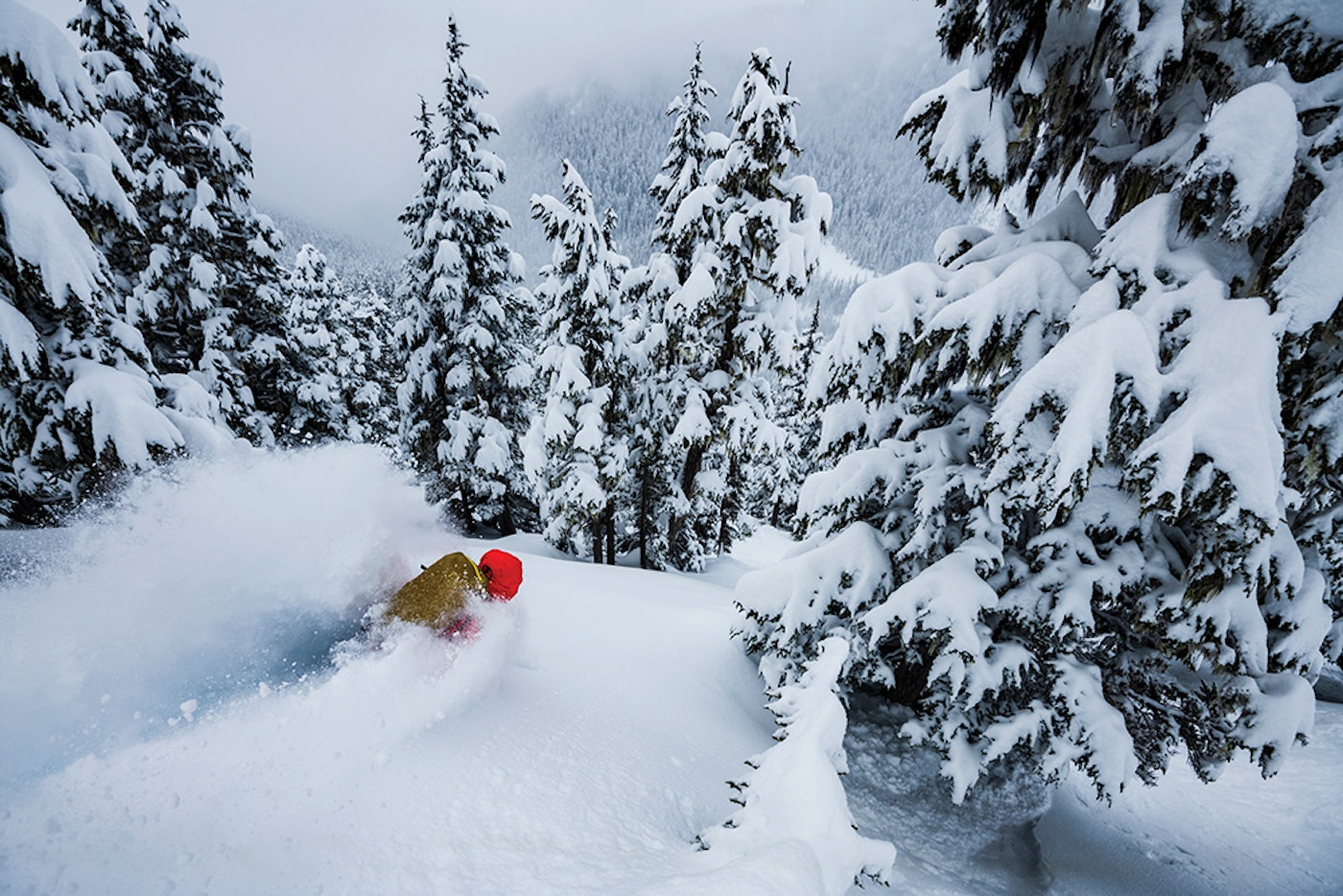
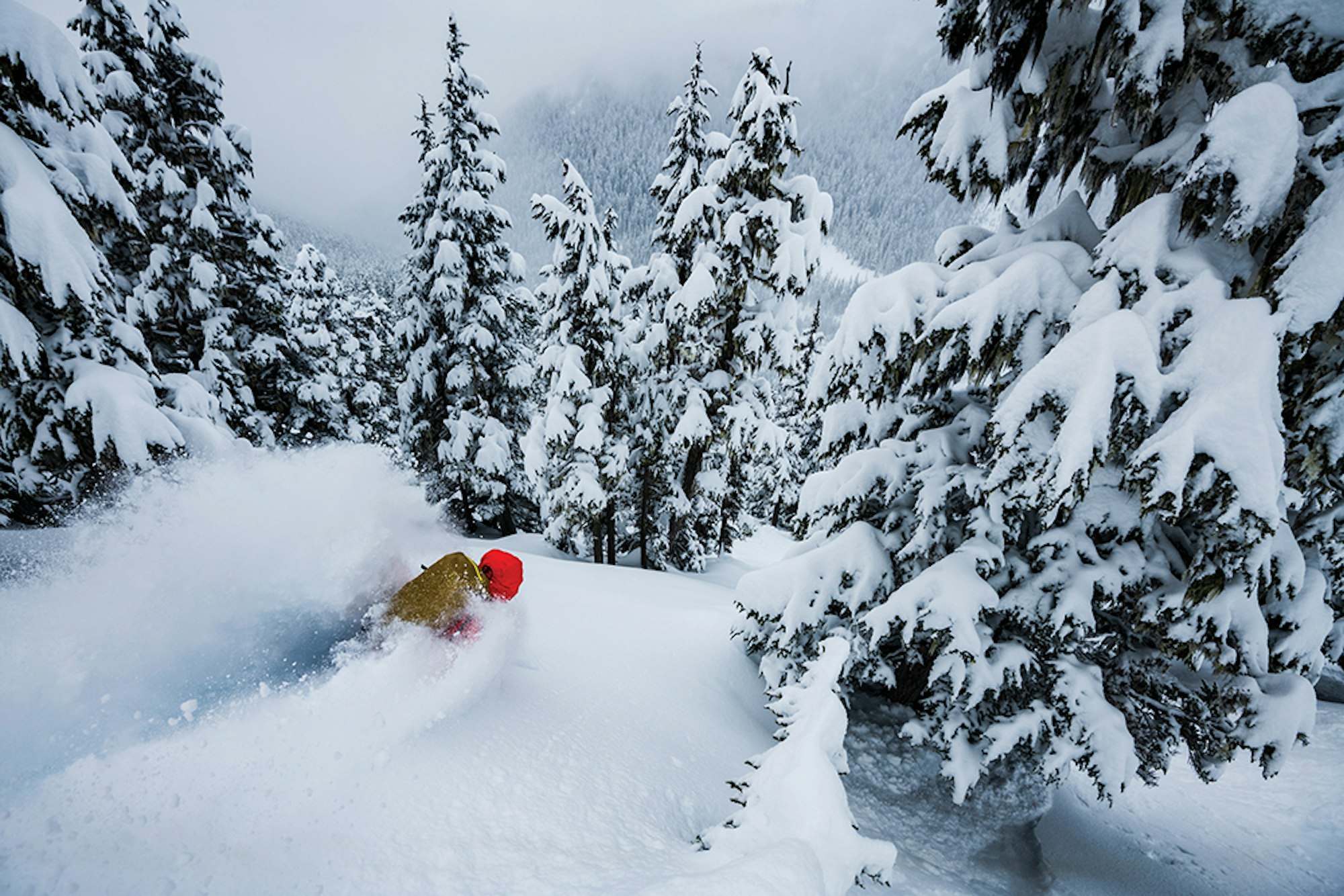
Chad Sayers skiing powder in the Shames backcountry.
Chad, a ski nomad, lives in Whistler but has been coming to Shames regularly since his first visit in 2010. He visited three times that year with filmmaker extraordinaire Jordan Manley when the duo filmed an episode of the award-winning short series, A Skiers Journey. The Shames episode helped conjure the idea of the co-op, which eventually saved Shames Mountain.
We follow the rolling hills away from the ski area and aim northeast to The Dome, which offers several south and southwest-facing lines. With this cold storm, it’s the perfect place to start the day. Thirty minutes later, skins are ripped, stowed away and we’re ready to drop in. We decide to ski Waterfall Trees, one of my favorite runs near the ski area—it’s straight fall line, pretty steep and most often untracked. Chad drops first and skis the upper leg in one go. His first few turns create big smoke clouds and then he disappears around the corner. I drop in, realize the snow is a lot deeper than I thought and enjoy a few face shots before joining Chad by a lone tree.
We continue to ski the chute in the same way. The terrain flattens out as we hit the forest and we ski in tandem, a good way to keep track of each other among the area’s bottomless tree wells.
Back at the top lift, we meet Brad Zeerip—a ski legend in Terrace and a Shames local for more than 15 years. We join Brad and his friend Sarah Panofsky for another lap in the backcountry.
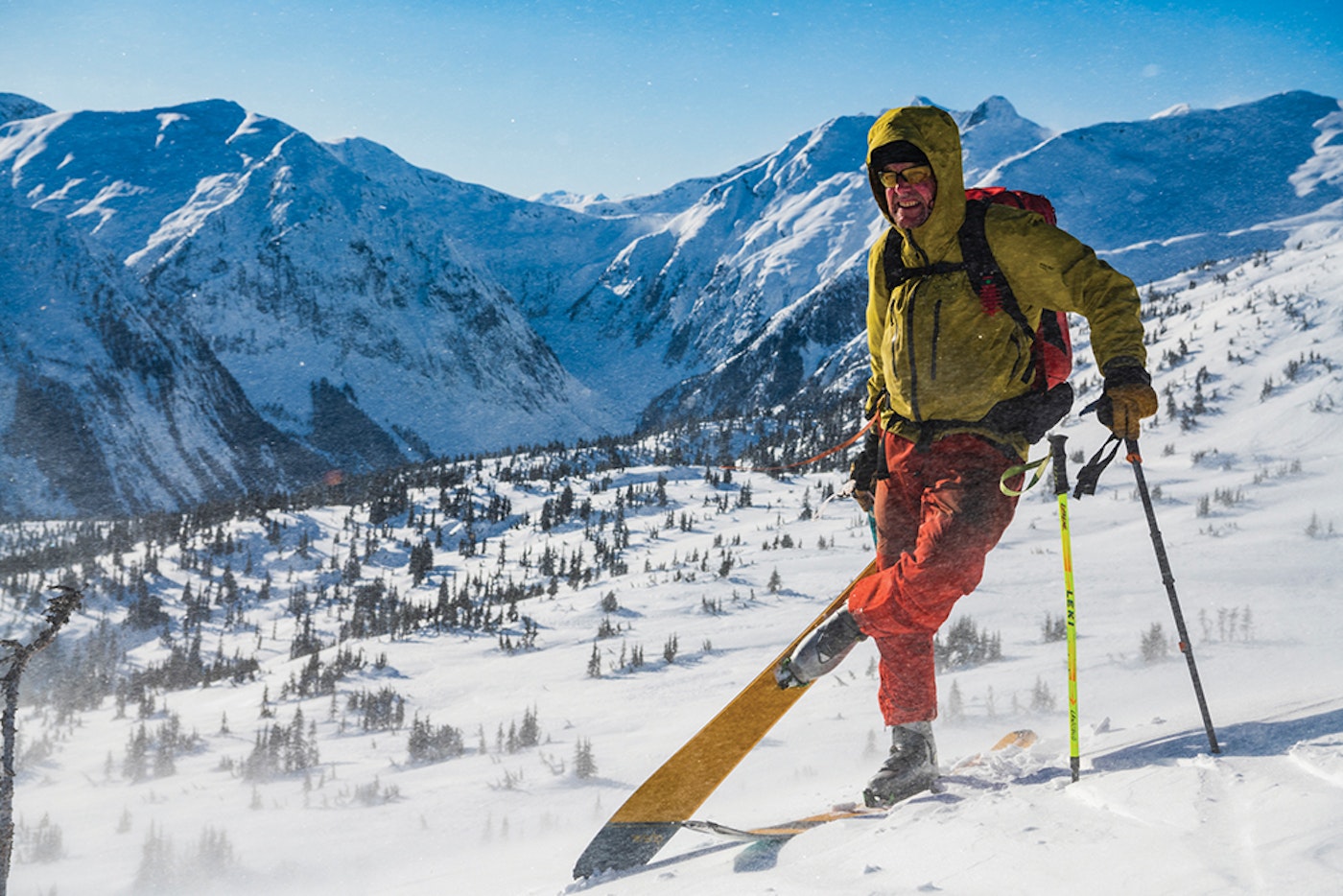
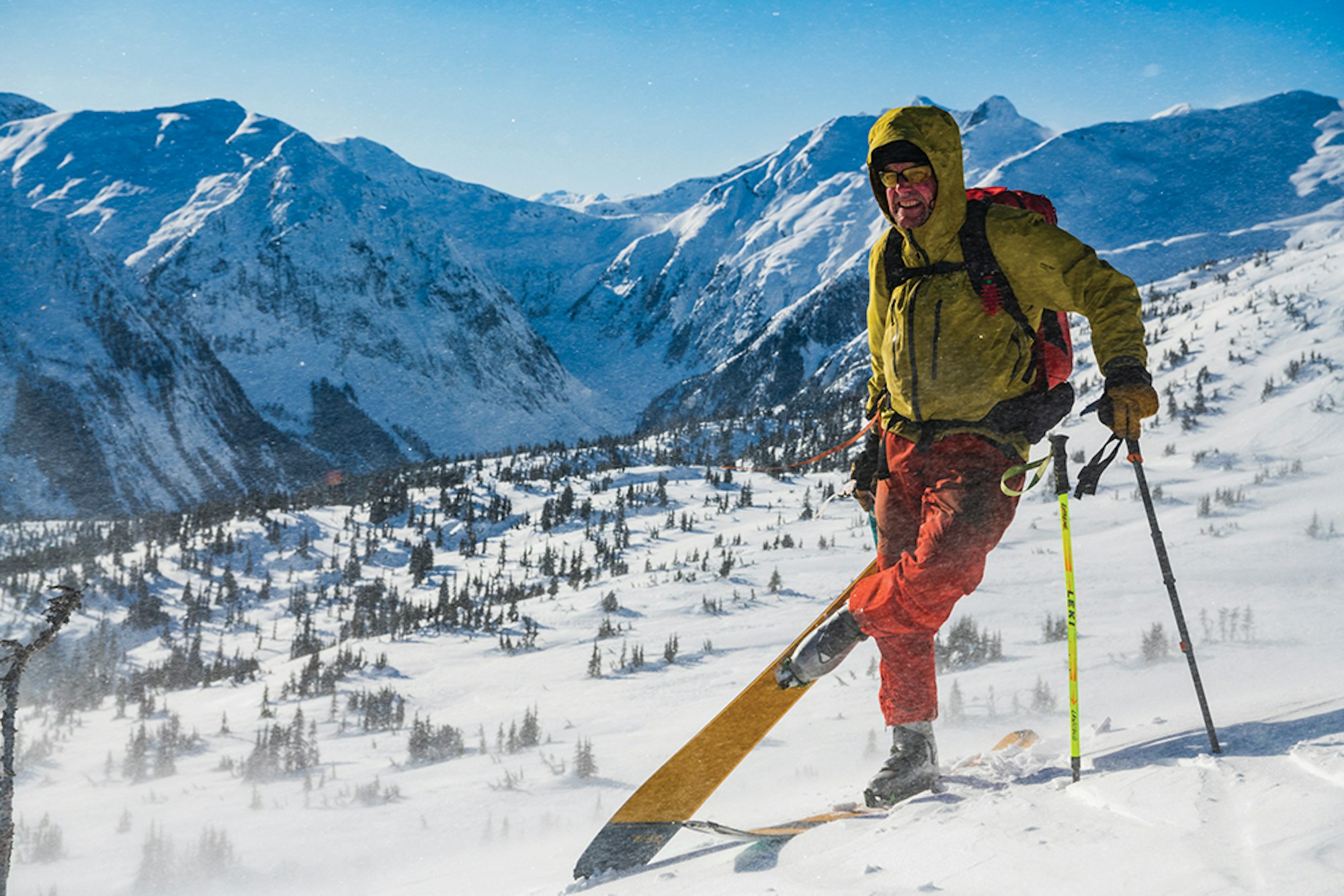
Brad Zeerip.
“There is skiing for a lifetime here around Terrace, and nobody seems to get that,” says Brad, with a big grin and his characteristic laugh.
I don’t think I’ve met a more passionate skier than Brad, a weather-bitten 60-year-old who’s a stronger skier than many people half his age. He’s in love with skiing and his whole life revolves around it. Brad skis every month of the year; if there is a strip of snow left somewhere in the Terrace backcountry, Brad finds it.
For a short time during the hot summer months, when he must take a break from skiing, Brad is brushing and trimming run-outs for his backcountry lines. As soon as the fall storms get colder, he is observing the weather and snow reports every day to figure out when it’s time to get back out there again. He also watches ski movies. Every single day.
Last fall, Brad was featured in Teton Gravity Research’s (TGR) Far Out. A crew from TGR came up to Terrace for a month and Brad helped them find some cool zones in the backcountry. Fittingly, Brad ended up with a part in the segment.
Brad moved to Terrace 16 years ago and, together with his partner Kim, he runs the Skeena River House B&B at the shore of the Skeena River. From their property, they can overlook the river and the mountains; it is a stunning location and a cozy little joint.
“I know my interest for skiing is a bit obsessed, and some people probably think I am weird,” Zeerip says. “I love skiing so much and it gives me so much back, I can’t stop!”
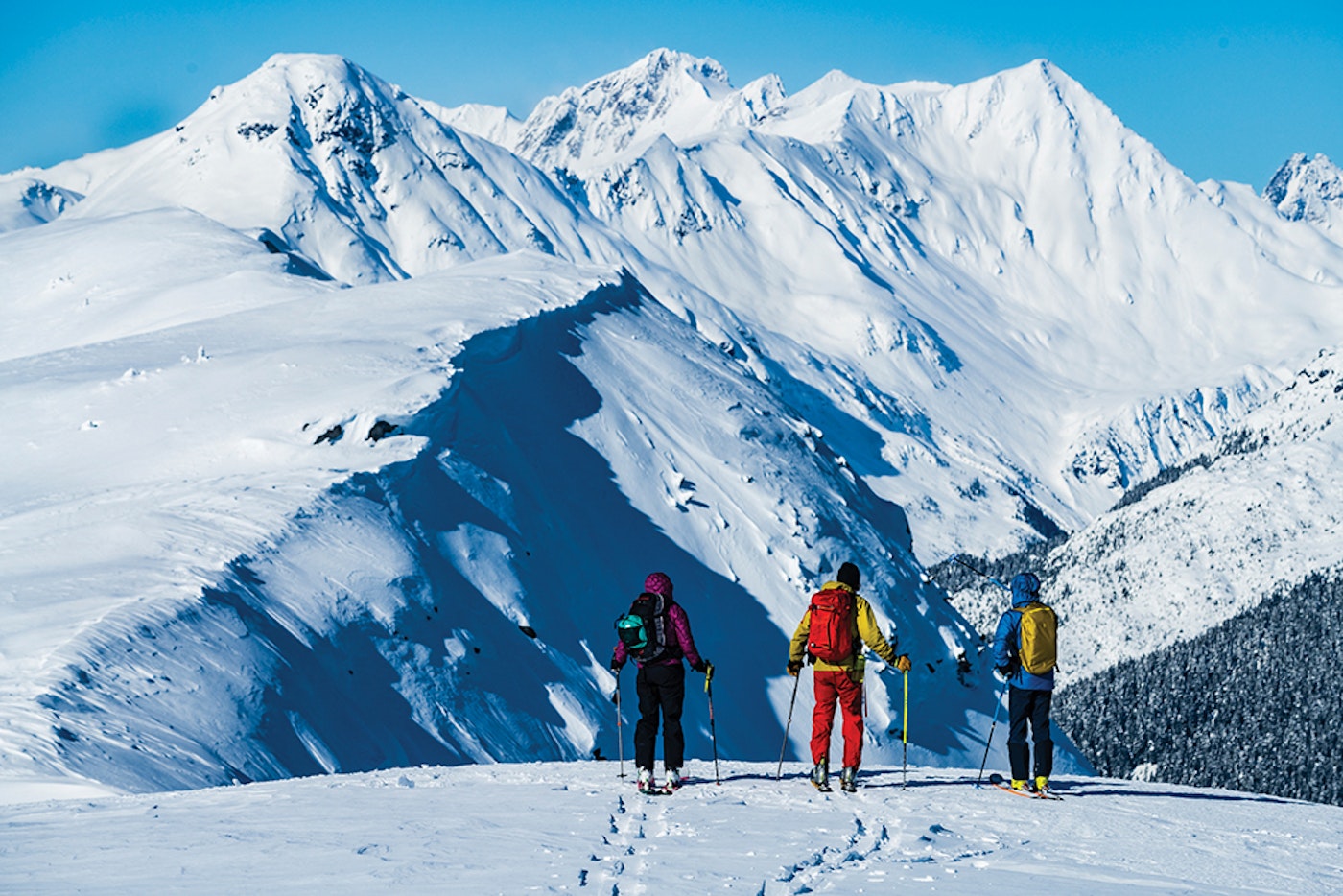
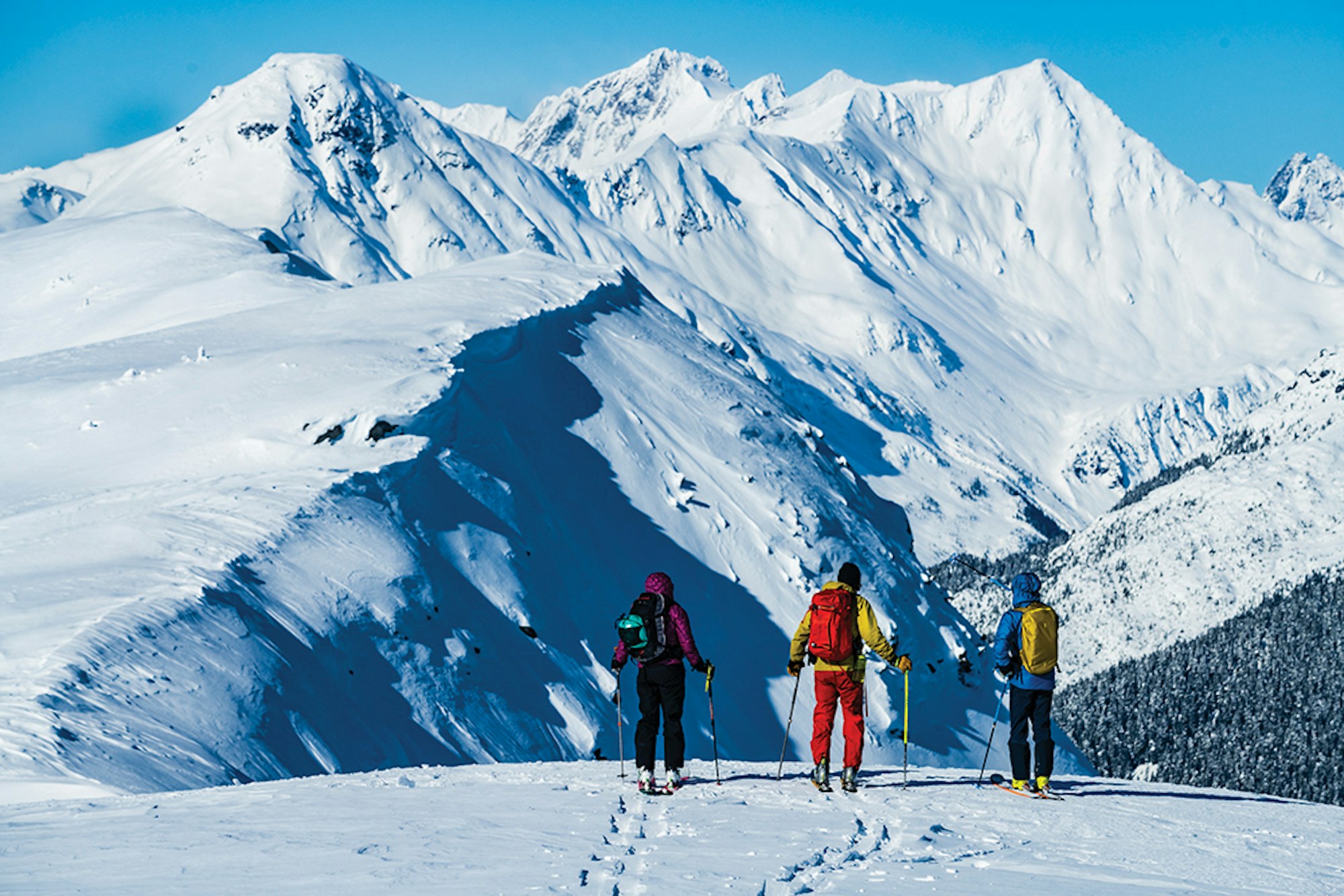
Sarah Panofsky, Brad Zeerip and Chad Sayers scouting lines in the Shames backcountry.
We continue past The Dome, towards Mt. Remo—an iconic 1,934-meter peak that you can see clearly from the ski area. It’s much windier now, but it does not stop us from walking up to a line called Brad’s Breakfast, obviously named after Mr. Zeerip.
We rip skins above Brad’s Breakfast and follow him from safe zone to safe zone. We reconvene down lower, where the snow isn’t as risky. Brad points his DPS powder skis into the fall line and starts skiing again. He is fast, stable and knowledgeable.
We ski down through Mystic Valley with the sun shining off the steep canyon walls. Eventually, we glide along the flats back towards the ski area. The snow is still deep in the gully and the trees are completely covered in pristine white fluff. It is a peaceful ending to our run.
Brad represents the ski culture here in northern British Columbia—unique, soulful and committed to its roots. The type of values that attracted people to Terrace in the first place. It is the polar opposite of the super commercial wave of gentrification that many well-known ski destinations offer these days.
After visiting more than 250 ski resorts worldwide in my profession as a photographer and journalist in the ski industry, I am so thankful to call Shames Mountain my home hill. The move to British Columbia—and Terrace, in particular—has been inspiring, both on a personal and professional level. To have a new fresh canvas to explore is a privilege. I think I will stay here forever.
This story originally appeared in the FREESKIER Backcountry Issue (22.3)

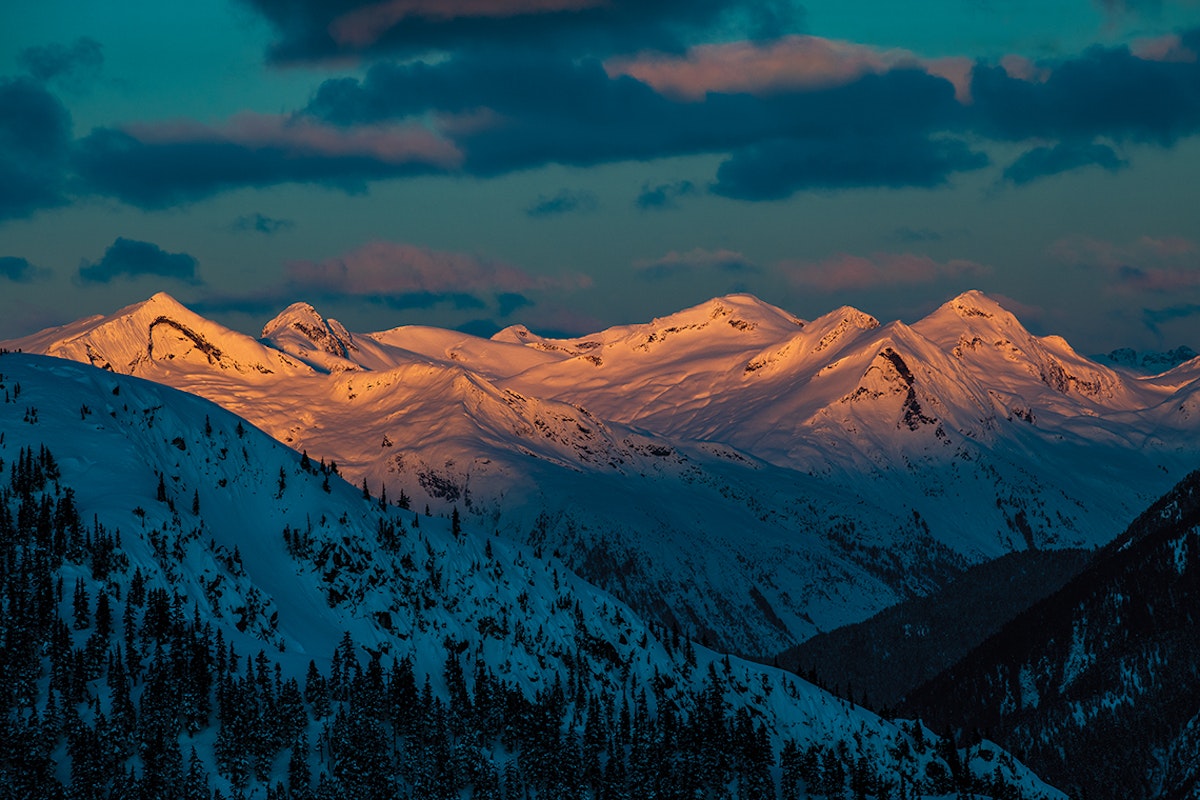
![[GIVEAWAY] Win a Legendary Ski Trip with Icelantic's Road to the Rocks](https://www.datocms-assets.com/163516/1765233064-r2r26_freeskier_leaderboard1.jpg?w=200&h=200&fit=crop)
![[GIVEAWAY] Win a Head-to-Toe Ski Setup from IFSA](https://www.datocms-assets.com/163516/1765920344-ifsa.jpg?w=200&h=200&fit=crop)
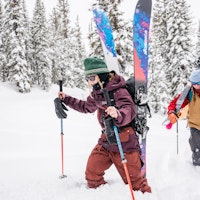
![[GIVEAWAY] Win a YoColorado X Coors Banquet Prize Package](https://www.datocms-assets.com/163516/1764877349-long-live-local-cooler-bag2.jpeg?w=200&h=200&fit=crop)
![[GIVEAWAY] Win a Legendary Ski Trip with Icelantic's Road to the Rocks](https://www.datocms-assets.com/163516/1765233064-r2r26_freeskier_leaderboard1.jpg?auto=format&w=400&h=300&fit=crop&crop=faces,entropy)


![[GIVEAWAY] Win a Head-to-Toe Ski Setup from IFSA](https://www.datocms-assets.com/163516/1765920344-ifsa.jpg?auto=format&w=400&h=300&fit=crop&crop=faces,entropy)


